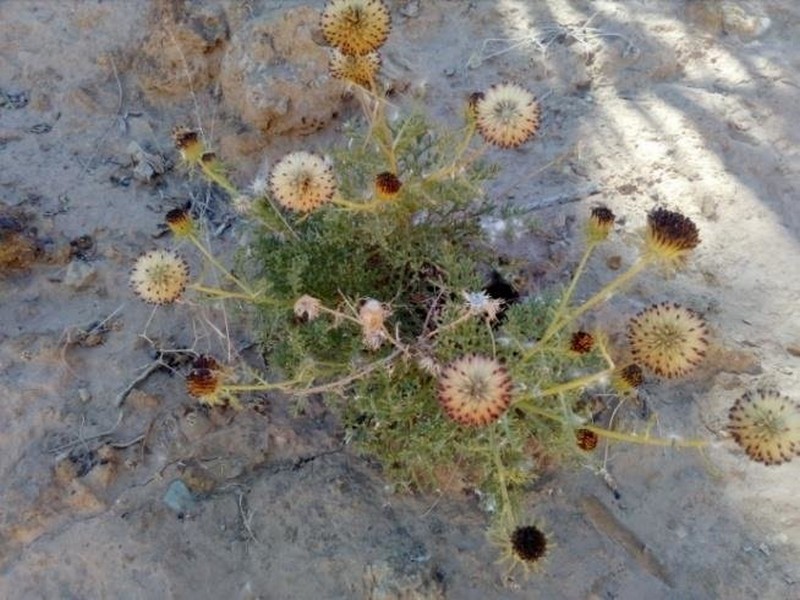Recherchez sur le site !
Recherche avancée / SpécifiqueCatégories publications
+ Sciences De La Terre - Archéologie - Astronomie - Spéléologie - Ecologie - Pédologie - Volcanologie - L'hydrogéologie - Géomorphologie - Minéralogie - Pétrologie - Paléontologie - Géologie + Climatologie - Réchouffement climatique - Changement climatique + Plantes - Plantes Aromatiques - Plantes médicinales + Zoologie - Faunes + Botanique - Flors + Sciences humaines - Géo Eco Tourisme - L’anthropologie - L'Histoire - Démographie - Sociologie - Géographie - Patrimoine culturel
Géo éco tourisme inclusif

Géoparc et Recherche Scientifique
Le coins de l’étudiant



Blog Géoparc Jbel Bani
Anti corrosive activity of Pulicaria mauritanica essential oil from the oasis of Tata against the corrosion of mild steel in 0.5 M H2SO4 (Géoparc Jbel Bani)
By Aicha Hamdouch, Ali Anejjarc, Bouchra Cheblib, Lalla Mina Idrissi Hassania
Laboratory of plant biotechnology, Faculty of science B.P 8106, University Ibn Zohr, Agadir 80000, Morocco
Laboratory of biology, School of applied sciences, B.P 1136, University Ibn Zohr, Agadir 80000, Morocco,
Laboratory of environment and water science, School of applied sciences, B.P 1136, University Ibn Zohr Agadir, Morocco,
* Corresponding author. E-mail address: aicha.hamdouch@uiz.ac.ma
Received 12 Aug 2017, Revised 7 Sep 2017, Accepted 17 Sep 2017
Abstract
Pulicaria mauritanica essential oils (EOs) obtained by hydrodistillation was tested as corrosion inhibitor of carbon steel in 0.5 M H2SO4 using weight loss measurements, electrochemical polarization and EIS methods. The inhibition efficiency was found to increase with EOs concentration to attain 95.08% at 2g/L. Polarization curves revealed that this P. mauritanica EOs act as mixed type inhibitor with a strong predominance of cathodic character. The adsorption of inhibitor onto the carbon steel surface was found to be a physical process as mechanism and to follow the Langmuir adsorption isotherm. The results obtained showed that the P. mauritanica EOs could serve as an effective inhibitor of the corrosion of carbon steel in sulfuric acid media.
Keywords: Oasis of Tata, Pulicaria mauritanica, essential oil, anticorrosive activity.
1. Introduction
The oasis of Tata is situated in the southeast of Morocco. Geographically the area corresponds to the southern side of the mountains of the Anti-Atlas and occupies an area of 26,274 sq/k. The area is characterized by a hyperaridity marked by low rainfall of around 100 mm, of stormy character, and large fluctuations in the daily and yearly temperatures. Its population is mainly rural (70%) [1].
This study aimed the contribution to the valorization of an endemic species of Morocco: Pulicaria mauritanica through studying the anticorrosive activity of essential oil from leaves and stems of this species.
P. mauritanica (Asteraceae) is an aromatic, endemic plant growing wild in southeast Morocco. It bears several vernacular names “Bamghar” and “Ifenzi oudaden”, among the Saharan population of Morocco. Decoction and maceration of its leaves and flowers are used to treat digestive and circulatory troubles [2].
The use of organic inhibitors is one of the best methods of protecting metals against corrosion [3]. Due to the toxicity of these corrosion inhibitors there has been increasing search for green corrosion inhibitors which are environmentally friendly and are gotten from natural products such as plant extracts [4], especially essential oils.
The use of natural plant products is an interesting alternative or a complementary control method because of their nonphytotoxicity, systemicity and biodegradability [5-9].
2. Materials and methods
2.1. Collection of plant
The aerial part of P. mauritanica was collected randomly in the oasis of Tata in the southern-east of Morocco during May-July 2015. Plant samples were air dried in the shade then stored in the dark at 4 °C.
2.2. Isolation of essential oil of P. mauritanica as inhibitor
One hundred grams of air dried leaves of P. mauritanica were submitted to hydro-distillation with a Clevenger-type apparatus according to the European Pharmacopoeia [10] and extracted with one litter of distilled water for 5 hours (until no more EOs was obtained). The essential oil obtained was dried under anhydrous sodium sulphate and stored at 4 °C until used. The yields (w/w) were determined.
2.3. Anticorrosive activity
2.3.1. Materials
The steel used in this study is a carbon steel (Euronorm: C35E carbon steel and US specification: SAE 1035) with a chemical composition (in wt %) of 0.380% C, 0.230% Si, 0.680% Mn, 0.016% S, 0.077% Cr, 0.011% Ti, 0.059% Ni, 0.009% Co, 0.160% Cu and the remainder iron (Fe).
2.3.2. Solutions
The aggressive solution of 0.5 M H2SO4 was prepared by dilution of phosphoric acid grade 98% with bidistilled water. The concentration range of P. mauritanica EOs employed was 0.1g/L to 2g/L.
2.3.3. Weight loss measurements
Weight loss measurements are a first approach characterization of the inhibition of corrosion carbon steel samples with P. Mauritanica EO s in phosphoric acid medium (0.5 M H2SO4). Gravimetric measurements were carried out at definite time interval of 6 hrs at room temperature using an analytical balance (precision ± 0.1 mg). Carbon steel specimens used have a rectangular form (2 × 2 × 0.08 cm3). Gravimetric experiments were carried out in a double glass cell equipped with a thermostated cooling condenser containing 80 mL of non-de-aerated test solution. After immersion period, the steel specimens were withdrawn, carefully rinsed with bidistilled water, ultrasonic cleaning in acetone, dried at room temperature and then weighted. Triplicate experiments were performed in each case and the mean value of weight loss was calculated. Corrosion rate (W) is calculated using equation (1) [11]:
W= Δm /S × t (1)
Where Δm is the average weight loss of carbon steel sheets, S the total area of one specimen, and t is immersion time.
With the calculated corrosion rate, the inhibition efficiency (Ew) is calculated using equation (2) [11]:
Ew (%) = (W0corr - Wcorr)/ W0corr × 100 (2)
Where W0corr and W0corr are the corrosion rates of steel due to the dissolution in 0.5 M H2SO4 in the absence and the presence of definite concentrations of inhibitor, respectively
224
2.3.4. Electrochemical tests
The electrochemical study was carried out using a potentiostat PGZ100 piloted by Voltamaster software. Used potentiostat is connected to a cell with three electrode thermostats with double wall (Tacussel Standard CEC/TH). Saturated calomel electrode (SCE) and platinum electrode were used as reference and auxiliary electrodes, respectively. The material used for constructing the working electrode was the same used for gravimetric measurements with dimensions (0.700 cm × 0.0235 cm).
Potentiodynamic polarization curves were plotted at a polarization scan rate of 1 mV/s. Before all experiments, the potential was stabilized at free potential during 30 min. The polarization curves are obtained from -800 mV to -200 mV at 298 K.
Electrochemical impedance spectroscopy (EIS) measurements are carried out with electrochemical system which included a digital potentiostat model Voltalab PGZ100 computer at Ecorr after immersion in solution without bubbling. After determination of steady-state current at a corrosion potential, sine wave voltage (10 mV) peak to peak, at frequencies between 100 kHz and 10 mHz are superimposed on the rest potential. Computer programs automatically controlled the measurements performed at rest potentials after 30 min of exposure at 298 K. The impedance diagrams are given in the Nyquist representation. The inhibition efficiency is calculated for impedance measurements using equation (3):
ERt (%) = (t R – 0 t R)/ t R × 100 (3)
Where t R and 0 t R are the charge transfer resistance values with and without inhibitor, respectively, and for potentiodynamic polarisation measurements using equation (4):
EI (%) = (I0 corr - Icorr)/ I0 corr × 100 (4)
Where I0 corr and Icorr are the corrosion current densities in absence and in presence of the inhibitor
3. Results and discussion
3.1. Polarization measurements
Current–potential characteristics are given in Fig. 1. The corrosion current densities were estimated by Tafel extrapolation of the cathodic curves to the open circuit corrosion potential.
Figure. 1 Potentiodynamic polarization curves of carbon steel in 0.5 M H2SO4 in the presence of different concentrations of P. Mauritanica EOs.
These results show that the cathodic areas are in the form of straight Tafel, indicating that the reduction hydrogen evolution reaction at the steel surface is in pure mechanism activation control. The addition of inhibitor to the corrosive environment results in a very slight modification of Tafel slopes (bc) (Table 1). This result leads us to suggest that the proton reduction mechanism is not changed by the addition of P. mauritanica EOs. In the anode region, the addition of the inhibitor causes a decrease in current without changing the slope, so P. mauritanica EOs can be considered a mixed inhibitor. The action of the EOs resulted in a slight decrease in current.
Table 1 Electrochemical parameters of carbon steel in 0.5 M H2SO4 solution without and with P. Mauritanica EOs at different concentrations.
The results show also that the Icorr values decrease with increasing inhibitor concentration leading to the reduction in the corrosion rate. Moreover, the addition of P. Mauritanica EOs produces slight changes in the values of Ecorr and bc. This indicates that the adsorbed molecules of P. Mauritanica EOs do not affect the mechanism of hydrogen evolution. In addition, The values of inhibition efficiency (EI %) increase with inhibitor concentration reaching a maximum value (95%) at 2 g/L, which mean that P. Mauritanica EOs is a good inhibitor for carbon steel corrosion.
3.2. Determination of the inhibition efficiency by Gravimetric measurements
The average corrosion rate (Wcorr) of the steel in absence and presence of different concentrations of P. Mauritanica EOs was evaluated from the determination of weight loss measurements.
We clearly see that P. Mauritanica EOs possesses interesting inhibiting properties of corrosion of carbon steel in 0.5 M H2SO4 medium (Table 2). The variation of the inhibition efficiency dependent on the concentration of P. mauritanica EOs is illustrated in Fig. 2. It appears that the corrosion rate decreases, which leads to an increase of the effectiveness of the protection with the inhibitor concentration, which reaches a maximum value of 85% at a concentration of 2 g/L. This decrease in corrosion rate is likely due to the adsorption of molecules of the inhibitor on the surface metal and forming a molecular film layer or barrier between the metal and the corrosive medium according to Obot [12].
Figure. 2 Evolution of the inhibition efficiency as a function of concentration of P. Mauritanica essential oil at 298K.
3.3. Electrochemical impedance spectroscopy measurements
The impedance spectra obtained in corrosion potential are recorded after 30 min immersion in various concentrations of P. Mauritanica EOs. The single capacitive loop can be attributed to the charge transfer that takes place at electrode/solution interface, and the charge transfer process controls the corrosion reaction of carbon steel and the presence of P. Mauritanica EOs does not change the mechanism of dissolution of the electrod. Nyquist diagrams are shown in Fig. 3.
Figure. 3 Nyquist diagrams for C38 steel electrode with and without P. Mauritanica EOs at Ecorr after 30 min of immersion.
The diameter of Nyquist plots increase while increasing the concentration of P. Mauritanica EOs indicating strengthening of formed inhibitive protective film. The capacitive loops Nyquist diagrams obtained are not perfect semicircles, due to the frequency dispersion which can be connected to a surface of heterogeneity which generates a frequency distribution. This heterogeneity results from roughness, impurities, and relocations, adsorption of the inhibitor and/or the formation of porous layers [13]. The curves show a capacitive depression loop that results from the time constant of the electric double layer and the charge transfer resistance, which allows to provide the equivalent electric circuit (EEC) for interface metal/electrolyte represented by the Fig.3, in which the ability of the double layer capacitance (Cdl) and the charge transfer resistance (Rt) are introduced in parallel, the resistance of the electrolytic solution (Rs) is inserted in series in the circuit. (Fig. 4)
Figure. 4 The electrochemical equivalent circuit used to fit the impedance spectra.
Values of the double layer capacitance Cdl were calculated from the frequency at which the impedance imaginary component -Zi is maximum using equation (5):
Values of the charge transfer resistance Rt were obtained from these plots by determining the difference in the values of impedance at low and high frequencies as suggested by Tsuru and
Haruyama [14]. Table 3 gives the values of the charge transfer resistance Rt, double layer capacitance Cdl, and the inhibition efficiency obtained from the above plots.
Analysis of the results allows us to conclude that the transfer resistance values (Rt) are becoming more important with increasing the concentration of the inhibitor. The inhibition efficiency evolving of the same way as the charge transfer resistance (Rt) and reaches a maximum value of 95% due to the decrease in corrosion rate and increasing the thickness of the formed film proactive. When the concentration of the inhibitor increases; the size of the capacitive loop increases. This can be attributed to the charge transfer process. The value of the impedance obtained in the blank is smaller than those obtained with presence of the inhibitor P. Mauritanica EOs. This result reflects the influence of the inhibitor on the process at the interface [14]. With the addition of the inhibitor, the capacitive character of the double layer (Cdl) decreases. This reduction is associated to the adsorption of organic molecules to the surface of the steel. Indeed, more inhibitor adsorbs more the thickness of the organic deposit increases and the capacity of the double layer decreases according to the equation (6) given by the model of Helmholtz [15].
Cdl = ε × ε0/π × S (6)
Where π is the thickness of the deposit, S is the area of the electrode, ε0 is the vacuum permittivity and ε is the dielectric constant.
The evolution of inhibition efficiency E (%), obtained by the three methods (polarization curves, weight loss and EIS methods), as a function of concentration of P. Mauritanica EOs in 0.5 M H2SO4 is showed in Fig. 5. The results obtained show a good agreement with the three methods used in this investigation, significantly in high concentrations.
Figure. 5 Comparison of inhibition efficiency E (%) values obtained by polarization, weight loss and EIS methods.
3.4. Adsorption isotherm
The mechanism of inhibition is accompanied by a change of the difference potential between the metal electrode and the solution; this is due to a non uniform distribution of electric charges in the metal solution interface. The action of an inhibitor in the acid medium is assumed to be due to its adsorption to the metal/solution interface. The adsorption process depends on the electronic characteristics of the inhibitor, the kind of metal surface temperature, steric effects and the varying degrees of site activity [16].
When a corrosion inhibitor is added to a corrosive environment, its adsorption to the metal/solution interface occurs by various adsorption isotherms such as Langmuir, Timkin and Frumkin obtained from the following equations:
Langmuir isotherm: equation (7) C/ θ = 1/Kads +C
Timkin isotherm: equation (8) θ = 1/f ln(b × C)
Frumkin isotherm: equation (9) θ/ (1- θ) exp (-ƒ× θ) = K × C
The three isotherm all tested were adapted to all data obtained and the curve Cinh / θ = f (Cinh), at 298K as shown in Fig. 6, is a straight line with slope very close to unity (1.04) and the value of correlation coefficient R2=1 as can be seen for the Langmuir isotherm, regression values indicating that the best adsorption isotherm protecting matches the surface electrode is the Langmuir isotherm.
Where Cinh is the inhibitor concentration, θ is the degree of the coverage on the metal surface and Kads is the equilibrium constant for the adsorption–desorption process. The adsorption equilibrium constant, Kads is related to the standard free energy of adsorption reaction ΔGads by the equation (10) [17]:
Kads= 1/55.5exp (-ΔGads/RT) (10)
Where R is the universal gas constant, T is the thermodynamic temperature and the value 55.5 is the concentration of water in the solution in mol/L.
Fig. 6 Plots of Langmuir adsorption isotherm of P. Mauritanica essential oil on the carbon steel surface at 298K.
The value of Gads = -19.308 kJ mol-1 is too negative indicating that P. Mauritanica EOs is strongly adsorbed on the steel surface and ensuring the spontaneity of the adsorption process occurs with the formation of a film adsorbed on the electrode surface [18]. This type of isotherm is generally regarded to indicate physisorption. The adsorption phenomenon may be made by the principal constituent of the essential oils. But as the natural oil contains many components, the inhibitory action may be due to the synergism intermolecular of different components of the EOs.
4. Conclusion
The electrochemical and gravimetric study of the inhibition of corrosion of carbon steel 0.5 M H2SO4 medium by Pulicaria mauritanica EOs was performed. The following conclusions can be drawn:
- The value of the inhibitory efficiency increases with the concentration of the inhibitor to achieve 95% at 2g / L.
- The polarization data indicate that this inhibitor behaves as a mixed type inhibitor by inhibiting both cathodic hydrogen evolution reactions and anodic metal dissolution.
- The decrease in the charge transfer resistance with the increase in the inhibitor concentration showed that essential oils formed protective layers on the carbon steel surface.
- Pulicaria mauritanica EOs was adsorbed physically on the steel surface according to the Langmuir isotherm model and the electrostatic interaction leads to more surface coverage and hence greater inhibition.
- All the results obtained from the three different methods: potentiodynamic polarisation, weight loss and electrochemical impedance spectroscopy measurements (EIS) are in good agreements.
References
1. M. Abouri, A. El Mousadik, F. Msanda, H. Boubaker, B. Saadi, K. Cherifi, J. Med. Plants Res. 1 (2012) 99-123.
2. H. Ouhaddou, H. Boubaker, F. Msanda, A. El Mousadik, J. Appl. Biosci. 84(1) (2014) 7707-7722.
3. N.O. Eddy, E.E. Ebenso , U.J. Ibok, J. Appl. Electrochem. 40 (2010) 445-456.
5. C. Fawcett, D. Spencer, Annu. Rev. Phytopathol. 8 (1970) 403-418.
6. P. Tripathi, N. Dubey, Postharvest. Biol. Tec. 32 (2004) 235-245.
7. I. Kosalec, S. Pepeljnjak, D. Kustrak, Acta Pharm. Zagreb, 55(4) (2005)377.
8. N. Ameziane, H. Boubaker, H. Boudyach, F. Msanda, A. Jilal, A.A. Benaoumar, Agron. Sustain. Dev. 27 (2007) 273-277.
9. M.A. Gatto, A. Ippolito, V. Linsalata, N.A. Cascarano, F. Nigro, S. Vanadia, D. Di Venere, Postharvest Biol. Technol. 61 (2011) 72-82.
10. Council of Europe. European pharmacopoeia, 3rd ed., Editor; 1997.
11. G. Cristofari, M. Znini, L. Majidi, A. Bouyanzer, S. Al-Deyab, J. Paolini, B. Hammouti, J. Costa. Int. J. Electrochem. Sci. 6 (2011) 6699-6717.
12. Obot I., Obi-Egbedi N., Odozi N.. Corros. Sci. 52 (2010) 923-926.
13. I. Ahamad, R. Prasad, M.Quraishi, Corros. Sci. 52 (2010) 933-942.
14. T. Tsuru, S.Haruyama, Corros. Eng. 27 (1978) 573-579.
15. M. Benabdellah, A. Tounsi, K. Khaled, B. Hammouti, Arabian J. Chem. 4 (2011) 17-24.
16. F.Mansfeld, Corros. 37 (1981) 301-307.
17. J.D. Talati, D.K. Gandhi, Corros. Sci. 23 (1983) 1315-1332.
18. H. Ashassi-Sorkhabi, B. Shaabani, D. Seifzadeh, Appl.Surf.Sci., 239 (2005) 154–164.
Source web : Aicha Hamdouch
Dictionnaire scientifique
Plus de 123.000 mots scientifiques
Les publications
Géo parc Jbel Bani

Circuits & excursions touristiques

cartothéques


Photothéques
Publications & éditions





